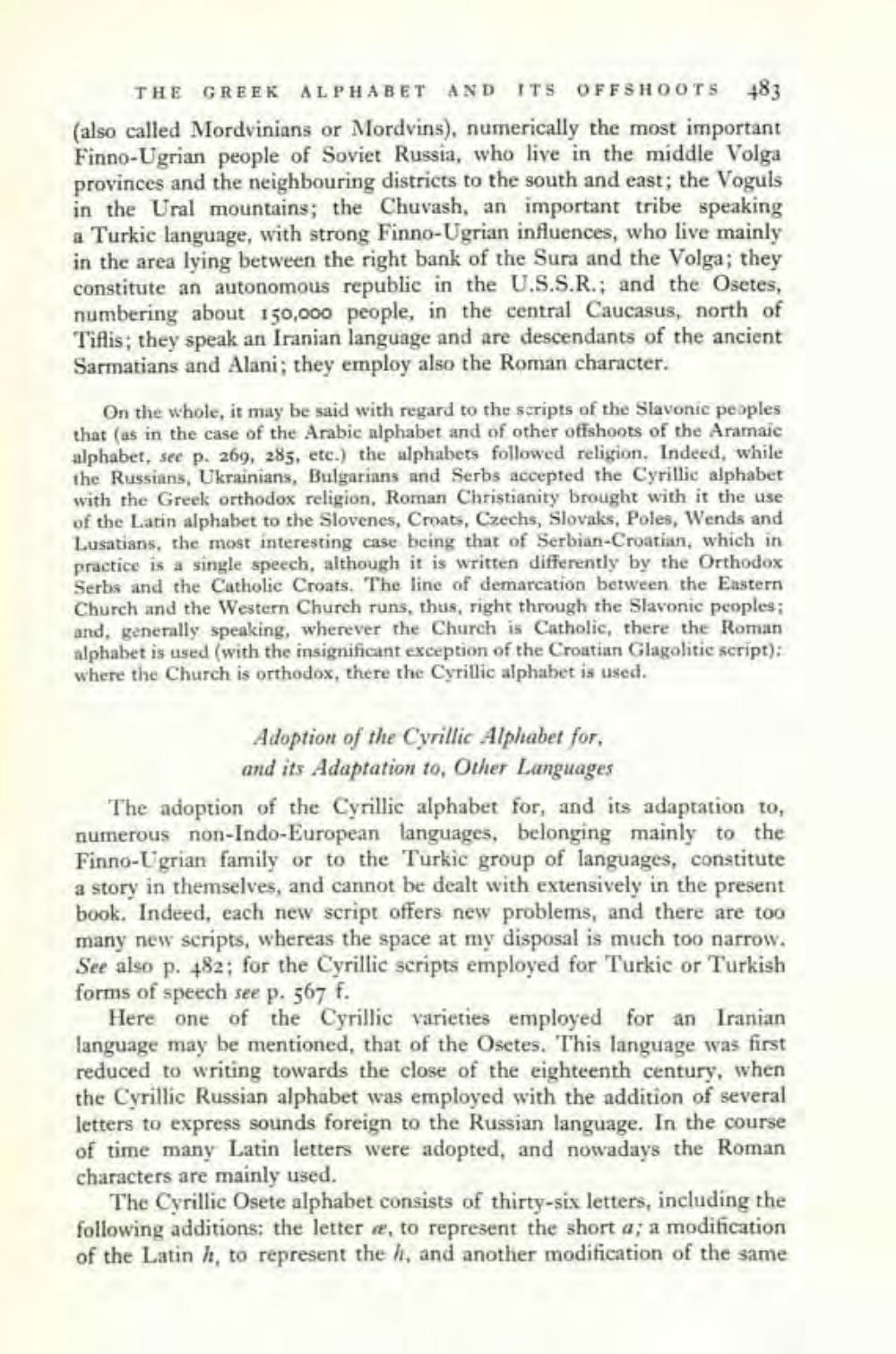________________
THE GREEK ALPHABET AND ITS OFFSHOOTS 483
(also called Mordvinians or Mordvins), numerically the most important Finno-Ugrian people of Soviet Russia, who live in the middle Volga provinces and the neighbouring districts to the south and east; the Voguls in the Ural mountains; the Chuvash, an important tribe speaking a Turkic language, with strong Finno-Ugrian influences, who live mainly in the area lying between the right bank of the Sura and the Volga; they constitute an autonomous republic in the U.S.S.R.; and the Osetes, numbering about 150,000 people, in the central Caucasus, north of Tiflis; they speak an Iranian language and are descendants of the ancient Sarmatians and Alani; they employ also the Roman character.
On the whole, it may be said with regard to the scripts of the Slavonic peoples that (as in the case of the Arabic alphabet and of other offshoots of the Aramaic alphabet, see p. 269, 285, etc.) the alphabets followed religion. Indeed, while the Russians, Ukrainians, Bulgarians and Serbs accepted the Cyrillic alphabet with the Greek orthodox religion, Roman Christianity brought with it the use of the Latin alphabet to the Slovenes, Croats, Czechs, Slovaks, Poles, Wends and Lusatians, the most interesting case being that of Serbian-Croatian, which in practice is a single speech, although it is written differently by the Orthodox Serbs and the Catholic Croats. The line of demarcation between the Eastern Church and the Western Church runs, thus, right through the Slavonic peoples; and generally speaking, wherever the Church is Catholic, there the Roman alphabet is used (with the insignificant exception of the Croatian Glagolitic script); where the Church is orthodox, there the Cyrillic alphabet is used.
Adoption of the Cyrillic Alphabet for,
and its Adaptation to, Other Languages The adoption of the Cyrillic alphabet for, and its adaptation to, numerous non-Indo-European languages, belonging mainly to the Finno-Ugrian family or to the Turkic group of languages, constitute a story in themselves, and cannot be dealt with extensively in the present book. Indeed, each new script offers new problems, and there are too many new scripts, whereas the space at my disposal is much too narrow. See also p. 482; for the Cyrillic scripts employed for Turkic or Turkish forms of speech see p. 567 f.
Here one of the Cyrillic varieties employed for an Iranian language may be mentioned, that of the Osetes. This language was first reduced to writing towards the close of the eighteenth century, when the Cyrillie Russian alphabet was employed with the addition of several letters to express sounds foreign to the Russian language. In the course of time many Latin letters were adopted, and nowadays the Roman characters are mainly used.
The Cyrillic Osete alphabet consists of thirty-six letters, including the following additions: the letter , to represent the short a; a modification of the Latin h, to represent the h, and another modification of the same




